
Owner’S
MANUAL
X3-45 VIP


COACH MANUFACTURER
OWNER’S MANUAL
X3-45 VIP
PA1625 Rev 4
June 2018

PA1625
Featuring:
GHG17 Motor
Electrical Fan Drive
New Electrical Architecture
First edition: February 2017, Model-year 2017 starting from vehicle H-6180
REV EFFECTIVE DESCRIPTION DATE
0 First Release Feb 2017
1 H6180 Starting and Stopping procedures: Revised rear start panel images & text June 2017
2 Prelim: J-6223,
Start: J-6280 Section 5: Added Wheelchair Lift Option November 2017
3 From J-6295 ABS8 January 2018
4 From J-6313 New coolant recovery tank June 2018

FOREWORD i
WARNING
Breathing diesel engine exhaust exposes you to chemicals known to
the State of California to cause cancer and birth defects or other
reproductive harm.
• Always start and operate the engine in a well-ventilated area.
• If in an enclosed area, vent the exhaust to the outside.
• Do not modify or tamper with the exhaust system.
• Do not idle the engine except as necessary.
For more information go to www.P65warnings.ca.gov/diesel
Proposition 65 Warning Decal on Diesel Engine Exhaust Health Hazard
DECAL #0691001
This warning decal is available through Prevost
Parts.
Best location where to affix the decal on the
vehicle.

ii FOREWORD
CRITICAL EMISSION-RELATED MAINTENANCE
Source of parts and repair:
A repair shop or person of the owner’s choosing must maintain, replace, or repair emission control
devices and systems per manufacturer's recommendations.
Replacement of tires that are GHG certified:
The original equipment tires installed on this vehicle at the factory were certified to the U.S. EPA
Greenhouse Gas (GHG) and National Highway Traffic Safety Administration (NHTSA) Fuel
Efficiency regulations. Replacement of these tires should
be with
a tire of equal or lower rolling
resistance levels (TRRL or Crr). Please consult your tire supplier(s) for appropriate replacement tires.
Maintaining a GHG certified tire:
In order to maintain the certified rolling resistance of the tires which optimize fuel economy, the
maintenance procedures provide by the tire manufacturer must be followed.

FOREWORD iii
EVENT DATA RECORDING DEVICES
This PREVOST vehicle is equipped with a device generally referred to as an "event data recorder" or
"EDR." Please note that while the term "event data recorder" is typically used throughout the motor
vehicle industry, not every EDR is the same; i.e., they do not all record the same data elements.
The EDR on this PREVOST vehicle records vehicle speed, engine RPM, time and date, plus a variety of
pedal and switch positions, both before and after an "event." Sudden vehicle deceleration or the
occurrence of certain other vehicle operational characteristics will define (trigger) an "event."
For any questions about this vehicle EDR device, contact a PREVOST Service Center or a regional
service manager.
TELEMATICS DEVICE
Your vehicle is equipped with one or more recording devices (“Telematics Device”), associated with
Prevost’s Connected Vehicle Services (the “Telematics Services”). These services, which are described
in greater detail at www.prevostcar.com (the “Website”), allow you to manage vehicle maintenance and
repair in a cost-effective manner by providing: proactive diagnostic and repair planning assistance with
detailed analysis of diagnostic trouble codes; streamlined service procedures with parts-on-hand
confirmation before a vehicle arrives for service; and live repair and customer communication. The
service eliminates or reduces diagnostics time, enhances repair efficiency, expedites decision process,
improves communications and maximizes uptime. To access the Telematics Services, you must enter
into a Telematics Subscription Agreement with Prevost, via the sales agreement pertaining to your
vehicle.
The Telematics Device collects stores and/or transmits information about your vehicle. Such information
may include direction and rate of speed, fuel consumption, engine performance, gearing, rpm, altitude,
geo-location (including a history of where the vehicle travels), safety information related to the use and
operation of the vehicle, vehicle performance, diagnostic data and error codes. The Telematics Device
has the capacity to store historical data about the use and performance of your vehicle. The Telematics
Device has the ability to transmit information to a central communications system. The information
contained in your Telematics Device may be periodically transmitted to or accessed by Prevost and
others authorized by Prevost, along with your vehicle’s VIN number or other identifying information.
Prevost does not collect any driver information. Prevost retains and uses this information to understand
the operational use of your vehicle, to remotely tune your vehicle, and to help facilitate maintenance and
vehicle improvements. To the extent allowed by law, Prevost reserves the right to access, use and control
this information.
Declining to enter into a Telematics Subscription Agreement with Prevost, or canceling a
Telematics Subscription Agreement, will not end the transmission of data from your Telematics
Device or the collection of information by Prevost. Prevost may access Telematics Data, to the
extent it is available, and use it in connection with providing services and vehicle improvements
to you and your vehicle. Prevost will regularly purge from its systems all data collected from your
Telematics Device, at time intervals determined by Prevost at its sole discretion.

iv FOREWORD
ELECTRONIC LOGGING DEVICE (ELD)
This vehicle is equipped with a dedicated ELD interface connector located under the lower left part of the
dashboard. This SAE J1939 9 PIN connector is compatible with most FMCSA approved ELD and will
ensure that the ELD will not interfere with the vehicle communication, diagnostic and/or driving systems.
Please take note that the OBD connector is only intended as a diagnostic equipment connection.
Installing an aftermarket plug-in device that uses the OBD port may cause interference and/or damage to
the vehicle systems, potentially affecting safe operation.
Both connectors (OBD and ELD) are clearly identified under the dash by stickers. The OBD port must
remain unconnected at all times except during vehicle maintenance (using Prevost approved
diagnostic equipment only).
Connecting aftermarket equipment to the OBD connector may lead to:
- Incorrect emission monitoring and failure to meet the requirements of emission tests.
- Erratic behaviour of one or more of the vehicle safety devices/driving aids, increasing the risk of
accidents.
- False code readings and inconsistency during vehicle diagnostic procedures, increasing vehicle
down time.
- Unreliable ELD connection/recording and potential violations with the federal ELD regulations*.
* For more information regarding Federal ELD requirements, consult the FMSCA

FOREWORD v
This Operator's Manual for the PREVOST H3-
41 and H3-45 coaches has been prepared to
thoroughly acquaint you, the driver, with the
equipment and features of the coach in order for
you to fully appreciate and safely enjoy this
vehicle. Prevost Car Incorporated is committed
to the continuous improvement of coach quality,
reliability, durability and safety. With innovative
features, the H3 series coach was designed with
passenger and driver safety and comfort in mind.
This manual contains information available at the
time of publication. Because standard and
optional equipment is covered in this manual,
some of the optional equipment described may
not apply to your coach. If in doubt, refer to the
technical documentation package provided with
the coach.
Driver's controls and instruments incorporate
advanced technology for enhanced driving ease
and security. This manual describes the main
features, instruments and controls, and servicing
requirements for both standard and optional
equipment. Read this manual carefully to take
advantage of the coach's advanced features and
to ensure optimum safety and passenger comfort.
Keep this manual in the coach at all times. Make
sure this manual is kept with the coach when
ownership is transferred. Please use the
appropriate card at the end of this manual to
promptly notify Prevost Car of any change of
address or transfer of ownership. This will ensure
we provide fast and reliable coach service to all
coach operators.
NOTE
Illustra
tions in this manual are used for
reference only and may differ slightly from the
actual vehicle; however, key components
addressed in the manual are represented as
accurately as possible.
Warnings, cautions and notes are used
throughout this manual to emphasize important
points when necessary:
WARNING
Directs the operator’s attention to unsafe
practices which could result in serious
personal injury or severe damage to the
vehicle.
CAUTION
Directs the operator’s attention to unsafe
practices whe
re personal injury is not
likely but damage to vehicle components
could occur.
NOTE
Indicates supplementary information essential
to the proper operation of the vehicle.
The service life of the coach depends on the kind
of attention it receives. Pay close attention to the
warnings, cautions and notes. Read the various
notices and instructions posted throughout the
coach and attached to equipment.
Since continuous improvement is a primary focus at Prevost
Car, we reserve the right to make changes anytime, without
notice, and without incurring any obligation.
Before reproducing or copying this manual, in whole or in
part, written consent must be obtained from Prevost Car
Incorporated.


Table of contents
vii
SECTION 1 SAFETY PRECAUTIONS .............................................................................................. 1-1
SECTION 2 VEHICLE EXTERIOR .................................................................................................... 2-1
SECTION 3 VEHICLE INTERIOR ..................................................................................................... 3-1
SECTION 4 CONTROLS AND INSTRUMENTS ............................................................................... 4-1
SECTION 5 OTHER FEATURES ...................................................................................................... 5-1
SECTION 6 STARTING AND STOPPING PROCEDURES .............................................................. 6-1
SECTION 7 SAFETY FEATURES AND EQUIPMENT ..................................................................... 7-1
SECTION 8 CARE AND MAINTENANCE ........................................................................................ 8-1
SECTION 9 TECHNICAL INFORMATION ........................................................................................ 9-1
ABBREVIATIONS
APPENDIX A – SERVICE LITERATURE
APPENDIX B – TROUBLESHOOTING MULTIPLEX
APPENDIX C – ALLISON DIAGNOSTIC TROUBLESHOOTING CODES
APPENDIX D – TPMS TROUBLESHOOTING GUIDE


Safety Precautions 1-1
SAFE OPERATING PRACTICES ................................................................................................................ 2
DEFENSIVE DRIVING PRACTICES ............................................................................................................ 2
OTHER PRECAUTIONS .............................................................................................................................. 3

Safety Precautions
1-2
To ensure safe and reliable operation, heed the
following safety precautions.
SAFE OPERATING PRACTICES
o Operation and maintenance of the vehicle
must be performed only by qualified
personnel.
o Before driving, conduct a walk around
inspection and check that all baggage
compartment doors and equipment access
doors are securely shut.
o Make sure good visibility is maintained at all
times. Keep windshields clean and free of
obstructions.
o Adjust the driver's seat so that all controls
can be reached easily.
o Always wear the safety belt when driving.
o Check the instrument panel frequently. Do
not operate the vehicle when dials or
indicators are not in their normal operating
condition.
o Always pay attention to pedestrians passing
in front and behind the vehicle. Always yield
to pedestrians at pedestrian walkways.
o Do not drive over obstacles on the road.
Empty boxes, piles of leaves, and snowdrifts
could conceal hidden dangers that could
damage the vehicle suspension and
underbody.
o When turning or changing lanes, signal your
intention well in advance.
o When approaching to make a right turn,
reduce the space between the vehicle and
the curb to make sure another vehicle
cannot pass on the right. Since the vehicle
makes wide turns, allow enough space to
make safe turns.
o Switch from high beams to low beams when
meeting or following other vehicles within
500 feet (150 meters).
o Never leave the vehicle unattended with the
engine running or with the key in the ignition.
Turn off the engine, remove keys and apply
the parking brake before leaving the vehicle.
o Shut-off the engine before refueling, adding
oil, performing maintenance or servicing
tasks, unless stated otherwise.
o Fuel is highly flammable and explosive. Do
not smoke when refueling. Keep away from
open flames or sparks.
o Do not run the engine or HVAC system with
access doors left open. Close compartment
doors before operating any equipment.
o Do not remove the surge tank filler cap or
the cooling system pressure cap when the
engine is hot. Let the engine cool down
before removing filler caps.
o Do not attempt to push or pull-start a vehicle
equipped with an automatic transmission.
o The service life of the vehicle depends on
the kind of maintenance it receives. Always
record any problems and report them
immediately to maintenance personnel.
o Do not use the trailer hitch before reading
the safety, technical and operational
requirements on page 14 of this manual.
DEFENSIVE DRIVING PRACTICES
o For city driving, allow a four to six second
travel interval between your vehicle and the
vehicle ahead. Increase this travel interval
to six to eight seconds for highway driving.
Increase time interval for driving at night or
in foul weather.
o Be prepared to stop when approaching an
intersection. The stopping distance of the
vehicle increases with the weight and speed.
o Establish eye-to-eye contact with other
drivers and with pedestrians. Use, high
beam and low beam headlights, turn signals
and horn as needed.
o On highway, don't stare at the road ahead.
Keep your eyes moving. Check mirrors and
dashboard instruments frequently.
o To keep the vehicle from drifting across
lanes during highway driving, always look
over the horizon on the road ahead.
o Adjust your speed to road conditions, traffic
and visibility. Never exceed the posted
speed limits.
o If another vehicle is following close behind,
reduce your speed to let the vehicle pass.
For additional information about safe operation
and defensive driving practices, contact the local
department of motor vehicles authority.

Safety Precautions
1-3
OTHER PRECAUTIONS
DANGER
Prior to working on a system inside the
vehicle, make sure to cut electrical power and
air supply. A component could be supplied
with electricity even if battery master switch is
set to the OFF position and/or a component
could be pressurized even if air tanks are
emptied. Always refer to the appropriate wiring
and pneumatic diagrams prior to working on
electrical and/or pneumatic systems.
WARNING
CALIFORNIA PROPOSITION 65:
Diesel engine exhaust and some of
its
constituents are known to the State of
California to cause cancer, birth defects and
other reproductive harm.
Battery posts, terminals and other related
accessories contain lead and lead
compounds, chemical known to the State of
California to cause cancer and other
reproductive harm.
Batteries also contain other chemicals known
to the State of California to cause cancer.
Wash hands after handling.
CAUTION
PRECAUTIONS ARE TO BE OBSERVED
BEFORE WELDING TO MINIMIZE THE RISK
OF MAJOR AND COSTLY DAMAGES
CAUSED TO THE VEHICLE ELECTRONIC
COMPONENTS!
1. Set the battery master switch to “OFF”
position.
2. Trip circuit breaker CB2 and CB6.
3. Disconnect electronic ground terminal
from the ground junction block located in
the battery compartment.
4. Make sure to clamp the welding ground
return as close as possible to the welding
point and make a good electric contact to
the chassis.
Detailed instructions are provided in section
00-GENERAL of your vehicle maintenance
manual.


Vehicle Exterior
2-1
ENGINE COMPARTMENT COMPONENTS ................................................................................................ 4
ENGINE COMPARTMENT R.H. SIDE DOOR ............................................................................................. 5
ENGINE COMPARTMENT REAR DOOR .................................................................................................... 5
EXHAUST AFTERTREATMENT SYSTEM ACCESS DOOR ...................................................................... 6
RADIATOR DOOR ....................................................................................................................................... 7
CATALYTIC CONVERTER ACCESS DOOR .............................................................................................. 7
CONDENSER COMPARTMENT (A/C) ........................................................................................................ 8
EVAPORATOR COMPARTMENT ............................................................................................................... 8
FRONT ELECTRICAL AND SERVICE COMPARTMENT ......................................................................... 10
BAGGAGE COMPARTMENTS .................................................................................................................. 10
RECLINING BUMPER COMPARTMENT .................................................................................................. 11
FUEL AND DIESEL EXHAUST FLUID (DEF) FILLER DOOR .................................................................. 11
ENTRANCE DOOR .................................................................................................................................... 12
KEYLESS ENTRY SYSTEM ...................................................................................................................... 12
REAR VIEW MIRRORS .............................................................................................................................. 12
BACK-UP CAMERA ................................................................................................................................... 13
110-120 VOLT CONNECTOR .................................................................................................................... 13
TRAILER HITCH ......................................................................................................................................... 13

Vehicle Exterior
2-2
X3-45 VIP MOTORHOME EXTERIOR VIEW (TYPICAL)
1.
Engine air intake
10.
Rear-view mirror
2.
Engine compartment R.H. side door
11.
Reclining bumper
3.
Hinged rear fender
12.
Front electrical and service compartment
4.
Baggage compartment
13.
Driver’s power window
5.
Fuel filler door
14.
Evaporator or baggage compartment
6.
Condenser or baggage compartment
15.
Radiator door
7.
Entrance door
16.
Catalytic Converter access door
8.
Entrance door power window
17.
Slide-Out (Optional)
9.
Engine compartment rear door
18.
Exhaust Aftertreatment System access door

Vehicle Exterior
2-3
X3-45 VIP COMERCIAL USE VEHICLE TYPICAL EXTERIOR VIEW (FRONT SLIDE-OUT SHOWN)
18369
1.
Engine air intake
10.
Rear-view mirror
2.
Engine compartment R.H. side door
11.
Front reclining bumper
3.
Hinged rear fender
12.
Front electrical and service compartment
4.
Baggage compartment
13.
Driver’s power window
5.
Fuel filler door
14.
Evaporator compartment
6.
Condenser compartment
15.
Radiator door
7.
Entrance door
16.
Catalytic Converter access door
8.
Entrance door power window
17.
Front Slide-Out (Optional)
9.
Engine compartment rear door
18.
Exhaust Aftertreatment System access door

Vehicle Exterior
2-4
ENGINE COMPARTMENT COMPONENTS
ENGINE COMPARTMENT FEATURING VOLVO D13 ENGINE
1. Diesel Oxidation Catalyst (DOC) & Diesel Particulate Filter (DPF) Assembly;
2. Transmission fluid dipstick;
3. Coolant fluid surge tank filler cap;
4. Coolant fluid surge tank sight glass;
5. Power steering fluid reservoir;
6. Engine oil dipstick;
7. Air filter;
8. Air filter restriction indicator;
9. Alternators, Road side;
10. Alternators, Curb side;
11. Engine oil filler tube;
12. Central A/C compressor;
13. Compressor belt tensioner;
14. Charge air cooler;
15. Radiator;
Page is loading ...
Page is loading ...
Page is loading ...
Page is loading ...
Page is loading ...
Page is loading ...
Page is loading ...
Page is loading ...
Page is loading ...
Page is loading ...
Page is loading ...
Page is loading ...
Page is loading ...
Page is loading ...
Page is loading ...
Page is loading ...
Page is loading ...
Page is loading ...
Page is loading ...
Page is loading ...
Page is loading ...
Page is loading ...
Page is loading ...
Page is loading ...
Page is loading ...
Page is loading ...
Page is loading ...
Page is loading ...
Page is loading ...
Page is loading ...
Page is loading ...
Page is loading ...
Page is loading ...
Page is loading ...
Page is loading ...
Page is loading ...
Page is loading ...
Page is loading ...
Page is loading ...
Page is loading ...
Page is loading ...
Page is loading ...
Page is loading ...
Page is loading ...
Page is loading ...
Page is loading ...
Page is loading ...
Page is loading ...
Page is loading ...
Page is loading ...
Page is loading ...
Page is loading ...
Page is loading ...
Page is loading ...
Page is loading ...
Page is loading ...
Page is loading ...
Page is loading ...
Page is loading ...
Page is loading ...
Page is loading ...
Page is loading ...
Page is loading ...
Page is loading ...
Page is loading ...
Page is loading ...
Page is loading ...
Page is loading ...
Page is loading ...
Page is loading ...
Page is loading ...
Page is loading ...
Page is loading ...
Page is loading ...
Page is loading ...
Page is loading ...
Page is loading ...
Page is loading ...
Page is loading ...
Page is loading ...
Page is loading ...
Page is loading ...
Page is loading ...
Page is loading ...
Page is loading ...
Page is loading ...
Page is loading ...
Page is loading ...
Page is loading ...
Page is loading ...
Page is loading ...
Page is loading ...
Page is loading ...
Page is loading ...
Page is loading ...
Page is loading ...
Page is loading ...
Page is loading ...
Page is loading ...
Page is loading ...
Page is loading ...
Page is loading ...
Page is loading ...
Page is loading ...
Page is loading ...
Page is loading ...
Page is loading ...
Page is loading ...
Page is loading ...
Page is loading ...
Page is loading ...
Page is loading ...
Page is loading ...
Page is loading ...
Page is loading ...
Page is loading ...
Page is loading ...
Page is loading ...
Page is loading ...
Page is loading ...
Page is loading ...
Page is loading ...
Page is loading ...
Page is loading ...
Page is loading ...
Page is loading ...
Page is loading ...
Page is loading ...
Page is loading ...
Page is loading ...
Page is loading ...
Page is loading ...
Page is loading ...
Page is loading ...
Page is loading ...
Page is loading ...
Page is loading ...
Page is loading ...
Page is loading ...
Page is loading ...
Page is loading ...
Page is loading ...
Page is loading ...
Page is loading ...
Page is loading ...
Page is loading ...
Page is loading ...
Page is loading ...
Page is loading ...
Page is loading ...
Page is loading ...
Page is loading ...
Page is loading ...
Page is loading ...
Page is loading ...
Page is loading ...
Page is loading ...
Page is loading ...
Page is loading ...
Page is loading ...
Page is loading ...
Page is loading ...
Page is loading ...
Page is loading ...
Page is loading ...
Page is loading ...
Page is loading ...
Page is loading ...
Page is loading ...
Page is loading ...
Page is loading ...
Page is loading ...
Page is loading ...
Page is loading ...
Page is loading ...
Page is loading ...
Page is loading ...
Page is loading ...
Page is loading ...
Page is loading ...
Page is loading ...
Page is loading ...
Page is loading ...
Page is loading ...
Page is loading ...
Page is loading ...
Page is loading ...
Page is loading ...
Page is loading ...
Page is loading ...
Page is loading ...
Page is loading ...
Page is loading ...
Page is loading ...
Page is loading ...
-
 1
1
-
 2
2
-
 3
3
-
 4
4
-
 5
5
-
 6
6
-
 7
7
-
 8
8
-
 9
9
-
 10
10
-
 11
11
-
 12
12
-
 13
13
-
 14
14
-
 15
15
-
 16
16
-
 17
17
-
 18
18
-
 19
19
-
 20
20
-
 21
21
-
 22
22
-
 23
23
-
 24
24
-
 25
25
-
 26
26
-
 27
27
-
 28
28
-
 29
29
-
 30
30
-
 31
31
-
 32
32
-
 33
33
-
 34
34
-
 35
35
-
 36
36
-
 37
37
-
 38
38
-
 39
39
-
 40
40
-
 41
41
-
 42
42
-
 43
43
-
 44
44
-
 45
45
-
 46
46
-
 47
47
-
 48
48
-
 49
49
-
 50
50
-
 51
51
-
 52
52
-
 53
53
-
 54
54
-
 55
55
-
 56
56
-
 57
57
-
 58
58
-
 59
59
-
 60
60
-
 61
61
-
 62
62
-
 63
63
-
 64
64
-
 65
65
-
 66
66
-
 67
67
-
 68
68
-
 69
69
-
 70
70
-
 71
71
-
 72
72
-
 73
73
-
 74
74
-
 75
75
-
 76
76
-
 77
77
-
 78
78
-
 79
79
-
 80
80
-
 81
81
-
 82
82
-
 83
83
-
 84
84
-
 85
85
-
 86
86
-
 87
87
-
 88
88
-
 89
89
-
 90
90
-
 91
91
-
 92
92
-
 93
93
-
 94
94
-
 95
95
-
 96
96
-
 97
97
-
 98
98
-
 99
99
-
 100
100
-
 101
101
-
 102
102
-
 103
103
-
 104
104
-
 105
105
-
 106
106
-
 107
107
-
 108
108
-
 109
109
-
 110
110
-
 111
111
-
 112
112
-
 113
113
-
 114
114
-
 115
115
-
 116
116
-
 117
117
-
 118
118
-
 119
119
-
 120
120
-
 121
121
-
 122
122
-
 123
123
-
 124
124
-
 125
125
-
 126
126
-
 127
127
-
 128
128
-
 129
129
-
 130
130
-
 131
131
-
 132
132
-
 133
133
-
 134
134
-
 135
135
-
 136
136
-
 137
137
-
 138
138
-
 139
139
-
 140
140
-
 141
141
-
 142
142
-
 143
143
-
 144
144
-
 145
145
-
 146
146
-
 147
147
-
 148
148
-
 149
149
-
 150
150
-
 151
151
-
 152
152
-
 153
153
-
 154
154
-
 155
155
-
 156
156
-
 157
157
-
 158
158
-
 159
159
-
 160
160
-
 161
161
-
 162
162
-
 163
163
-
 164
164
-
 165
165
-
 166
166
-
 167
167
-
 168
168
-
 169
169
-
 170
170
-
 171
171
-
 172
172
-
 173
173
-
 174
174
-
 175
175
-
 176
176
-
 177
177
-
 178
178
-
 179
179
-
 180
180
-
 181
181
-
 182
182
-
 183
183
-
 184
184
-
 185
185
-
 186
186
-
 187
187
-
 188
188
-
 189
189
-
 190
190
-
 191
191
-
 192
192
-
 193
193
-
 194
194
-
 195
195
-
 196
196
-
 197
197
-
 198
198
-
 199
199
-
 200
200
-
 201
201
-
 202
202
-
 203
203
-
 204
204
-
 205
205
-
 206
206
-
 207
207
-
 208
208
-
 209
209
-
 210
210
-
 211
211
-
 212
212
-
 213
213
-
 214
214
-
 215
215
Ask a question and I''ll find the answer in the document
Finding information in a document is now easier with AI
Related papers
-
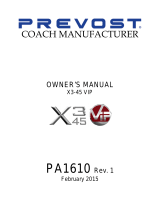 PREVOST X3-45 VIP Owner's manual
PREVOST X3-45 VIP Owner's manual
-
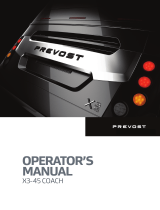 PREVOST X3-45 Owner's manual
PREVOST X3-45 Owner's manual
-
 PREVOST XLII-45 Entertainer Owner's manual
PREVOST XLII-45 Entertainer Owner's manual
-
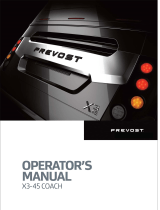 PREVOST X3-45 Owner's manual
PREVOST X3-45 Owner's manual
-
 PREVOST X3-45 Owner's manual
PREVOST X3-45 Owner's manual
-
PREVOST H3-45 Incomplete Owner's manual
-
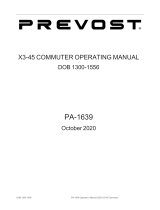 PREVOST X3-45 Commuter Owner's manual
PREVOST X3-45 Commuter Owner's manual
-
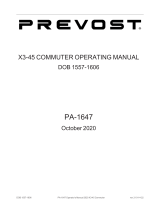 PREVOST X3-45 Commuter Owner's manual
PREVOST X3-45 Commuter Owner's manual
-
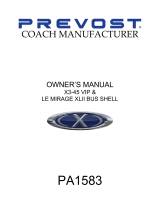 PREVOST XLII-45 Motorhome Owner's manual
PREVOST XLII-45 Motorhome Owner's manual
-
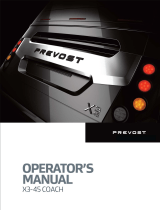 PREVOST X3-45 Owner's manual
PREVOST X3-45 Owner's manual
Other documents
-
BENDIX BW8203 Operating instructions
-
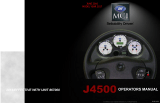 MCi J4500 User manual
MCi J4500 User manual
-
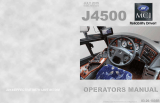 MCi J4500 User manual
MCi J4500 User manual
-
MAHLE ATX-3+Boost Owner's manual
-
BENDIX BW2839 User manual
-
TriMark e-ASK User manual
-
TriMark 500-1300 e-ASK Keyless-Entry System User manual
-
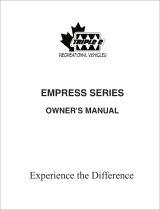 Triple E EMPRESS SERIES Owner's manual
Triple E EMPRESS SERIES Owner's manual
-
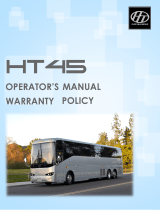 CHTC HT45 User manual
CHTC HT45 User manual
-
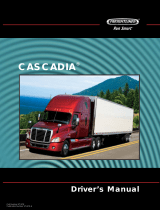 freightliner Cascadia Driver Manual
freightliner Cascadia Driver Manual




































































































































































































































